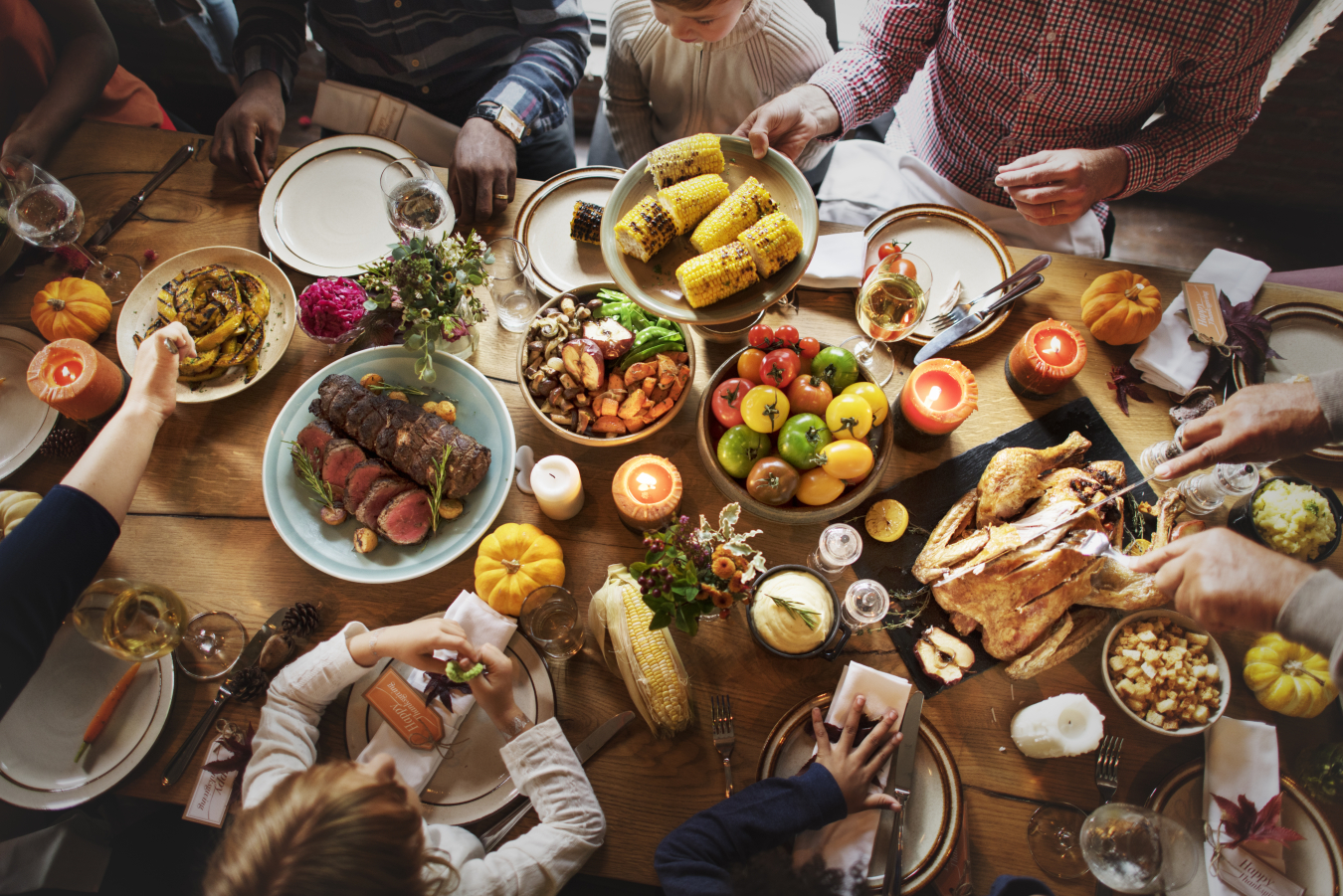The gravy boat is full, potatoes are mashed, and your opinionated loved ones have taken their seats around the table, ready to spark a midmeal debate at any moment.

Thankfully, we’re here to help you simmer down those tricky conversations and share a cross-generational grin, all while teaching your friends and family about wind energy.
Wind energy currently provides more than 10% of total U.S. electricity generation, making it the largest source of renewable energy in the United States. However, significantly increasing the nation’s wind power capacity will be crucial to achieving President Biden’s goals to reach 100% clean electricity by 2035 and a net-zero-emissions economy by 2050.
Here are common questions and concerns about wind energy you may encounter this holiday season and some suggestions and resources to help answer them.
“Does wind energy really work? How can it help us?”
You can start off with some low-hanging fruit—cranberries are a fan favorite. Oops, not that kind of fruit. Share the basics of how wind turbines work and jump into how wind energy can help us breathe easier, which explains how wind energy can help improve our health by reducing the emissions of harmful greenhouse gases and air pollutants that result from fossil fuels.
“I heard wind energy is expensive. Is it going to hurt the economy?”
To help ease concerns, share that wind energy is already among the lowest-cost energy sources available, particularly in regions of Texas, Oklahoma, and the Midwest.
What’s more, wind projects deliver an estimated $2 billion in state and local tax payments and land-lease payments each year, providing stable revenue to local communities. Communities can use this revenue for school budgets, reducing the tax burden of homeowners, local infrastructure projects, and more.
Is someone at the table searching for a job? Share that the U.S. wind industry employs over 120,000 people across all 50 states, and that number is projected to increase significantly. In fact, wind turbine technicians are among the fastest growing jobs and pay 30% more than the national median wage.
The offshore wind energy industry alone will need an average of up to 58,000 full-time jobs every year from 2024 to 2030, and creates a great opportunity for offshore oil and gas workers to transition to the clean energy workforce.
Learn more about careers in wind energy, or find wind energy education and training programs near you.
“I heard wind energy impacts wildlife and the environment.”
Climate change harms wildlife and the environment, and by reducing the need to use sources of energy that cause pollution, wind energy helps to mitigate future impacts. All energy supply options can have adverse environmental impacts, and unfortunately birds and bats are occasionally killed in collisions with wind turbines. However, bird deaths from wind turbines are limited to less than 0.02% of the total populations of songbird species (the most abundant bird group in the U.S. and Canada), which is many orders of magnitude less than other causes.
With funding from the Wind Energy Technologies Office (WETO), the U.S. Department of Energy’s national laboratories are researching how to make wind energy safer for wildlife and the environment.
For example, a tool created by researchers at the National Renewable Energy Laboratory can help predict potential interactions between eagles and wind turbines so that wind farm developers and operators can mitigate harmful encounters. WETO is also increasing investment in technologies that discourage bats from approaching wind turbines.
And when you’re tossing the leftover cans and cartons from your feast in the recycling bin, let your friends and family know that new materials and technologies are being developed to make wind turbine blades recyclable, too.
“We live in a remote area! Can wind energy really help us?”
Inform your nearest and dearest that they’re in luck. A type of wind energy called distributed wind energy can help serve local energy demands in rural and remote communities. They could even install a small wind turbine on their properties to potentially reduce their electricity bills!
Perhaps some examples will help convince them; tell them about three places American energy consumers are using local wind power and view our photo gallery that illustrates a variety of distributed wind users.
“This all sounds great, but where can I find information about wind energy for my local community?”
Tell your family and friends to visit WINDExchange, which is a hub of information and resources aimed at helping communities weigh the benefits and impacts of wind energy. Find state-specific wind energy resource maps, ordinances, education and training programs, and more for all 50 states.
“I have so many more questions and concerns about wind energy that you didn’t cover!”
For more information, direct your family members to the wind energy FAQ. And if they’re still not excited about wind energy, perhaps reading them the top 10 things you didn't know about wind power will perfectly complement another slice of pie.
We’re wishing you and your loved ones a happy holiday season filled with productive clean energy conversations. Cheers to making sure wind energy doesn’t get the short end of the wishbone!
Keep the conversation going—or prepare for the next one. You (or your curious mealtime companions) can explore WETO’s latest updates and subscribe to the Catch the Wind newsletter to get the latest news and learn about opportunities to get involved in wind energy.
